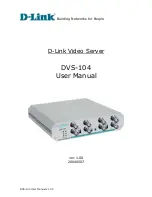
NOTE:
For details on the supported configurations for your HPE UPS, including when the disk
drive cache option is enabled, refer to
“Supported UPS Configurations” (page 111)
.
Also consider air conditioning failures during a real power failure because increased ambient
temperature typically causes the fans to run faster, which causes the system to draw more power.
By allowing for the maximum power consumption and applying those figures to the UPS
calculations provided in the UPS manuals, you can increase the ride-through time.
Guideline for Determining Ride-Through Time
A guideline for determining an appropriate ride-through time for your system is to use
to calculate the maximum total rack power consumption for your system,
then find the estimated battery run time for that total using one of these documents:
•
HPE UPS Best Practices
,
HPE UPS R5000 User Guide
or
HPE UPS 3 Phase User Guide
located at
http://www.hpe.com/support/UPS_3_Phase_Manuals
The power failure time configured in SCF should be no more than 75 percent of the estimated
battery run time, converted to seconds.
Considerations for Site UPS Configurations
OSM cannot monitor a site UPS. The SCF configured ride-through time on an NS2100 system
has no effect if only a site UPS is used. With a site UPS instead of a rack-mounted UPS, the
customer must perform manual system shutdown if the backup generators cannot be started.
It is also possible to have a rack-mounted UPS in addition to a site UPS. Since the site UPS can
supply a whole computer room or part of that room, including required cooling, from the perspective
of OSM, site UPS power can supply the group 100 AC power. The group 100 UPS power
configured in OSM, in this case, would still come from a rack-mounted UPS (one of the supported
models).
AC Power-Fail States
These states occur when a power failure occurs and an optional HPE model R5000 or R12000/3
UPS is installed in each cabinet within the system:
Description
System State
NonStop operating system is running normally.
NSK_RUNNING
OSM has detected a power failure and begins timing the
outage. AC power returning terminates RIDE_THRU and
RIDE_THRU
puts the operating system back into an NSK_RUNNING
state. At the end of the predetermined RIDE_THRU time,
if AC has not returned, the system goes to POWER_OFF.
Normal halt condition. Halted processors do not participate
in power-fail handling. A normal power-on also puts the
processors into the HALTED state.
HALTED
Loss of optic power from the blade element occurs, or the
UPS batteries suppling the blade elements are completely
POWER_OFF
depleted. When power returns, the system is essentially
in a cold-boot condition.
64
System Installation Specifications for NS2100 Systems
















































